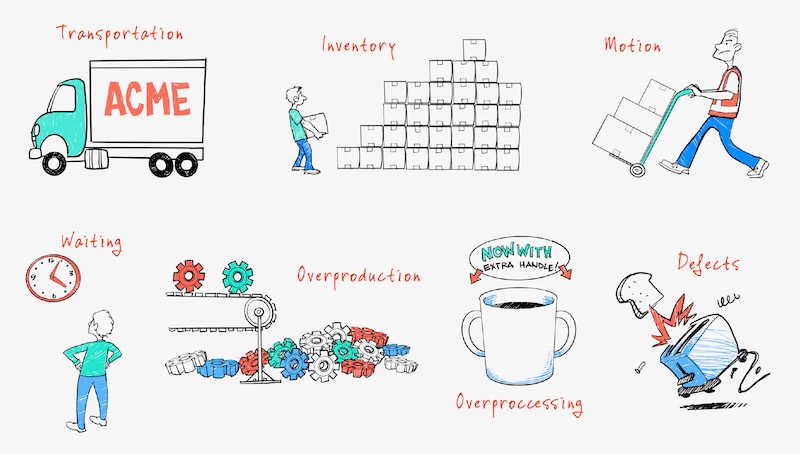
What Does TIMWOOD mean?

TIMWOOD is an acronym that encapsulates the 7 types of waste. It stands for Transportation, Inventory, Motion, Waiting, Overproduction, Overprocessing, and Defects. Toyota Production emphasizes these are the primary kinds of waste found in manufacturing industries.
Each letter emphasizes a specific kind of waste:

T: Transportation:
Unnecessary movement of products or materials from one place to another can damage goods and waste time and energy. For example, shifting raw materials from one warehouse to another can damage them, leading to poor-quality products.
I: Inventory:
Excessive items that serve no purpose and simply occupy space. This includes raw materials, finished goods, or work-in-progress products. Sometimes, warehouses order raw materials in bulk, which can take up space, get in the way, or lead to other forms of TIMWOOD waste.
M: Motion:
Movement that does not provide any beneficial gain or value to the process. This is quite common in retail stores, where walking significant distances, such as from the stock room to the front desk, is a common observation.
W:Waiting:
Delays or time spent waiting for finished goods, individuals, or equipment to get ready. It’s vital to ensure that processes are synced to avoid delays that contribute to advanced delivery time. This may upset customers and build a poor reputation for your brand.
O: Overprocessing:
Sometimes, doing more than what’s required may lead to capital waste. This includes adding extra features to a product or investing in over-the-top packaging, which serves no purpose or value and can lead to downtime and monetary waste.
O: Overproduction:
Producing more than necessary is a common waste multiple industries face. Without establishing clear customer expectations, you may have an excess product and eventually have to sell it for a lower price.
D: Defects:
The worst waste from the TIMWOOD acronym. When products are not up to standard, they may be deemed unusable, requiring additional time and effort to replace them.
A recent addition to the TIMWOOD acronym:
S: Skills:
This refers to unused potential or interest or tapping into potential capabilities and interests. Assigning people with poor organizational skills to leading or managerial positions solely based on their educational background can lead to other kinds of TIMWOOD waste.
Due to this recent addition, the acronym is now called “TIMWOODS” to help businesses identify and eliminate waste, leading to long-term profits and cost-efficient decisions.
TIMWOOD is a useful tool to help raise awareness of the different kinds of waste you may be susceptible to. At Creative Safety Supply, we help businesses optimize productivity and ensure beneficial gains by providing TIMWOOD posters to effectively spot TIMWOOD in the workplace.
Similar Glossary Terms
- DOWNTIME
- Waste of Overproduction
- Lead Time
- Lean Maintenance
- 7 Wastes of Manufacturing
- Material Flow
- WIP (Work in Progress)
- Cellular Manufacturing
- Lean Manufacturing Process

